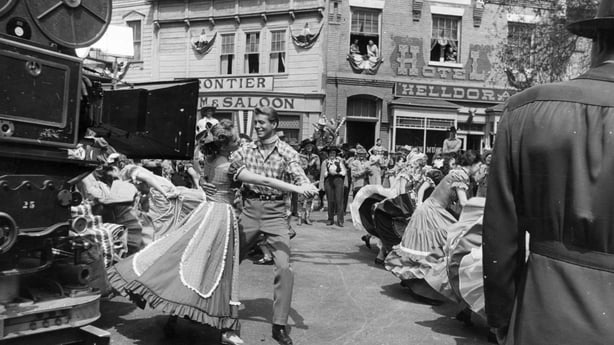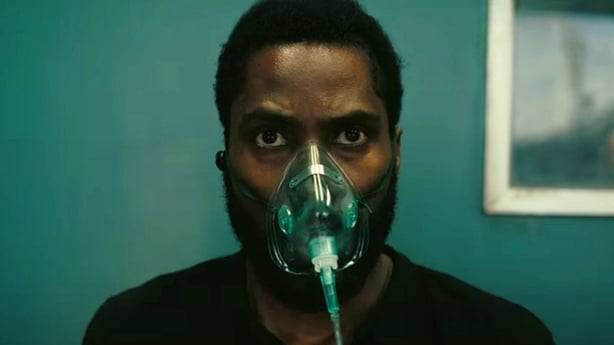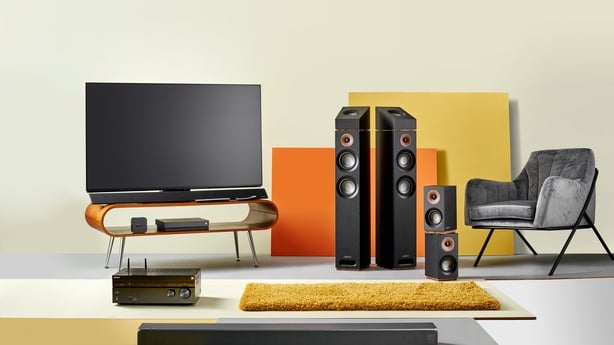Have you noticed you've had to push your TV’s volume bar that little bit higher recently?
Do you have to hit rewind every now and then because you missed what a key character said in your favourite show?
Or maybe you’ve decided to put the subtitles on permanently.
You might worry that this is a sign that your hearing is on the wane – but there’s a good chance it’s nothing to do with you.
It turns out that things are actually getting harder to hear.
So it’s not just me?
We need your consent to load this rte-player contentWe use rte-player to manage extra content that can set cookies on your device and collect data about your activity. Please review their details and accept them to load the content.Manage Preferences
No – not necessarily.
There is a growing issue of people suffering hearing damage from having their headphones up too high, and of course your hearing can degrade as you get older.
However the experience of not being able to hear what people are saying on the TV is separate to that – and it’s something a lot of people experience.
Data released by Netflix last year revealed that 40% of its users regularly use subtitles on their programmes – while 80% used them at least once a month.
Meanwhile a survey by YouGov in the UK last year found that nearly 30% of adults preferred to have subtitles on when watching content that was in their native language.
Some of them may have been doing that because they had impaired hearing – but many were doing it because it’s become so much harder to hear what is being said on screen.
So why are films and TV shows so much harder to hear now?

There’s a number of reasons – and they run from our living rooms, all the way back to the set that the film or TV show was made on.
The best starting point for explaining why is at the beginning - where something is being filmed.
Because the way TV and film is made has changed a lot in a relatively short period of time – and it’s now a million miles away from the earlier days of the silver screen.
If you think back to black and white and early colour classics, they were essentially set up like elaborate stage productions.
They were filmed on a specially-constructed set - which was very carefully lit- and scenes were shot by big, heavy cameras.
There were also bulky mics that could only be put in certain places in order to avoid being 'seen’ on camera.
And the actors had to work with that – and had to do the same thing that stage actors had to do, projecting their voices, speaking clearly and speaking in a particular direction to ensure the mic could pick up what they were saying.
Actors also tended to speak in very broad accents too, like received pronunciation.
But nowadays things tend to be shot in a far more naturalistic way – thanks in part to technological advancements, which have allowed the cameras and mics to be smaller, lighter and more portable.
So now you’re more likely to see things set in a real location, rather than a set on a big sound stage. The actors aren’t trying to project towards a big mic that’s off-camera, either, because they have a small, wireless lapel mic hidden on their clothes.
And that’s allowed them to deliver their dialogue with more range and nuance – and in a more normal way.
They might whisper, mumble, or say something quickly – and they may be doing so with any one of a number of accents that we’re potentially unfamiliar with.
All of which can be seen as a good thing – and a more realistic scenario. But it does mean the resulting dialogue isn’t going to be quite as clear at times.
Surely there are ways to fix that, though?
Well there is a balance to be struck there between a natural line delivery and being audible – and some actors are better at getting that than others.
And of course there’s a certain amount of audio editing that can be done in post-production – but there are limitations there too.
Those lapel mics are great at giving actors more flexibility but they also can’t pick up the same quality of audio as the larger boom mic that are held above their heads – just out of shot.
What they pick up can also be affected if the actor moves the wrong way, or some of their costume gets in the way.
And there’s only so much boosting you can do to what they’ve recorded before things start to get distorted.
If the original audio is deemed to be problematic for some reason there is also a process called ‘automated dialogue replacement’ (or ADR); where a studio gets an actor to go back and re-do lines afterwards, which are then dubbed over the scene that was originally shot.
But this costs money, because you have to bring the actor back (who’s maybe off working on some other project by that stage) and you need an audio engineer and an editor too.
So it’s only something studios or directors will do if they feel they really need to.
And some directors actually want you to struggle a bit with the dialogue.
Christopher Nolan has been criticised time and again for hard-to-hear films – Tenet being maybe the best example, where there was a lot of actors speaking while wearing oxygen masks.
But he’s said the audio mixing was a creative choice – not an accident or oversight.
He’s also very specific about how he mixes his films – which can create problems for people watching at home.
Why’s that?

This isn’t a problem that’s exclusive to Christopher Nolan’s films – it happens through cinema.
He says he only mixes his films for IMAX cinemas – which use a kind of six speaker surround sound.
Others will mix their films for regular, 5.1 surround sound.
Increasingly studios are favouring Dolby Atmos (some call it spatial audio) which uses ten speakers to create what is essentially a 3D effect in sound. That allows them to have noises that feel like they’re coming from different points in the room, not just from the direction of the speaker.
But either way, what tends to happen, is the film is mixed to this high-end standard, and then an editor downmixes it to the other formats.
And as you go from Dolby Atmos, to IMAX sound, to 3.1 surround sound, to stereo (which would be the standard for a TV) you’re squashing all those layers of audio, and all of that information, into fewer and fewer channels.
And the end result is different bits of audio getting squashed together, and are made less distinct from each other.
You also have less room for what’s called the sound’s dynamic range.
What’s that?
This is the concept of having room for your film or show to be quiet at times, and loud at times, in order to give what’s happening on screen more impact.
In effect that means you aim to make the sad or tense part quieter, to really pull the viewer in – but then you try to make the gunshots and explosions loud so people can get a visceral reaction to them.
But you can only make them so loud before they start getting distorted. So, often, the best way to make the loud parts stand out as much as you can is to make everything else – including the dialogue – quieter.
And so if you have a scene where there’s a lot going on – maybe it’s an action scene, with bits of dialogue throughout, and a rousing music score underneath it all - that might all be able to coexist in a cinema with a great sound system.
But it’s going to be a muddy mess to most people watching at home.
Because most of us don’t have professional-level sound systems at home…

No – and this is another part of the problem.
For most people the sound they’re getting from their TVs today is actually worse today than it would have been 10 or 20 years ago.
The reason for that is because of the move towards thinner and thinner TV sets – and with thinner bezels around the screens.
The smaller the body of the TV is, the less space there is for speakers. The smaller the speakers, the poorer the sound coming out of them is likely to be.
The same goes for laptops and smartphones – by design they have tiny speakers, so they’re only going to be capable of delivering a certain amount of quality sound and depth.
The placement of the speakers is also an issue – particularly when it comes to TVs.
Where as years ago you would have had the speakers next to the screen, facing out into the room, the lack of bezel around a modern screen means they now tend to be on the back.
That means the sound that is coming out is probably bouncing off a wall or two before it gets to your ears.
So unless you have really good acoustics and you’ve positioned your set in just the right way, the sound quality is going to be compromised even further.
Is there anything people can do?

The most straight-forward solution is to buy external speakers for your television.
But that is going to cost you money.
You can buy soundbars for relatively cheap nowadays and they’ll probably give you a noticeable improvement on the built-in speaker sound - but it’s still going to be a far cry from what the audio editor was thinking of when they were mixing the sound in the first place.
If you really want to get the full, surround sound effect you’re going to have to spend accordingly.
You may also seen an improvement if you use headphones – even a regular pair – because at least then you have the sound directed at your ears. That’s especially true if you’re watching something on your phone or tablet.
But it’s not the most sociable or practical solution if you’re watching something on your TV in the living room.
But while technological advancement can be blamed for a lot of what’s wrong with TV audio now, it is also starting to find solutions to the problem.
Last year Amazon announced that it would offer a ‘dialogue boost’ option on anything that was produced by their own studio.
Meanwhile Apple earlier this year announced updates to its Apple TV set top box, which includes upgrades to its ‘enhanced dialogue’ feature.
It claims to use machine learning to constantly adjust the dialogue volume so it can be heard over all of the music and action.
Essentially, it acts as an automated editor – and might save you having to hover over the remote waiting to put the volume up or down in response to what’s happening on-screen.







